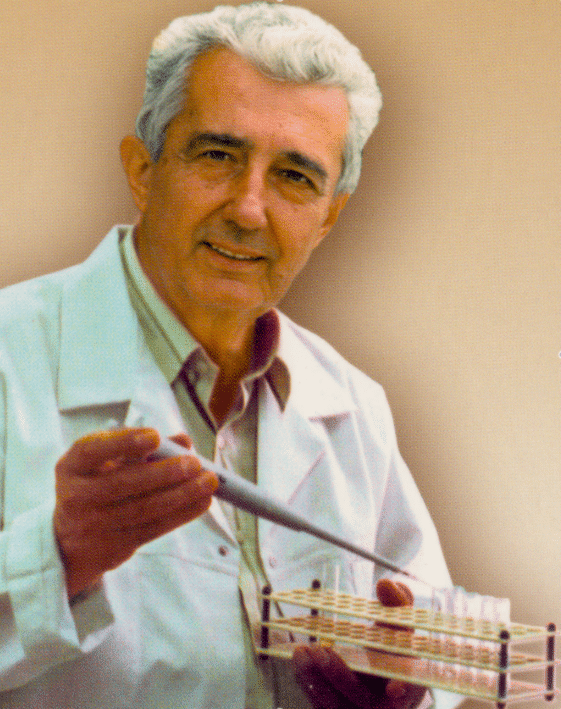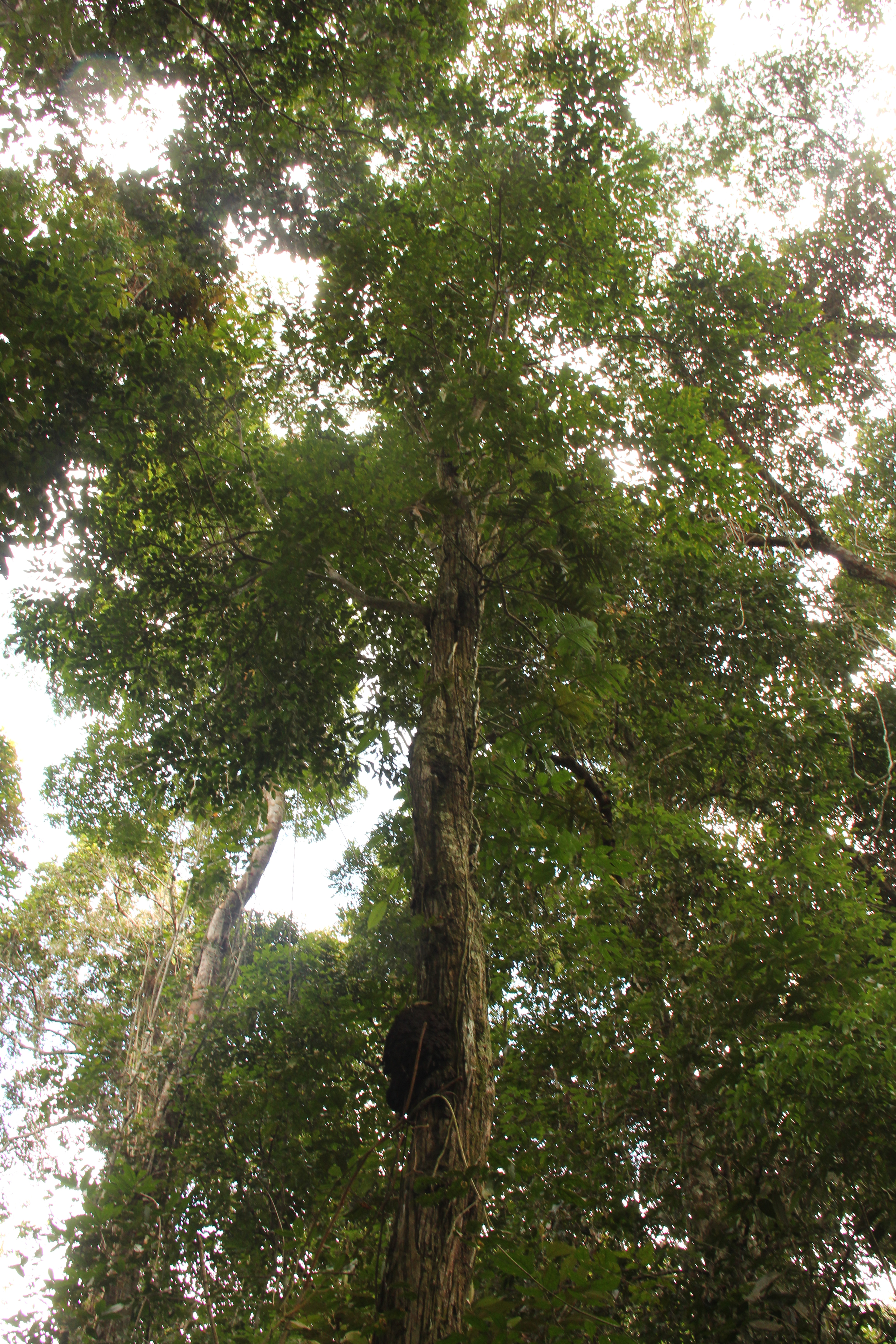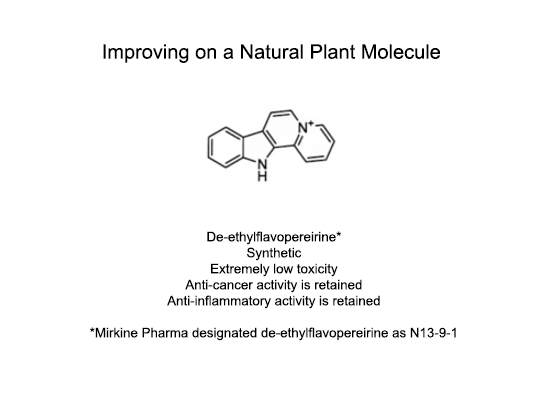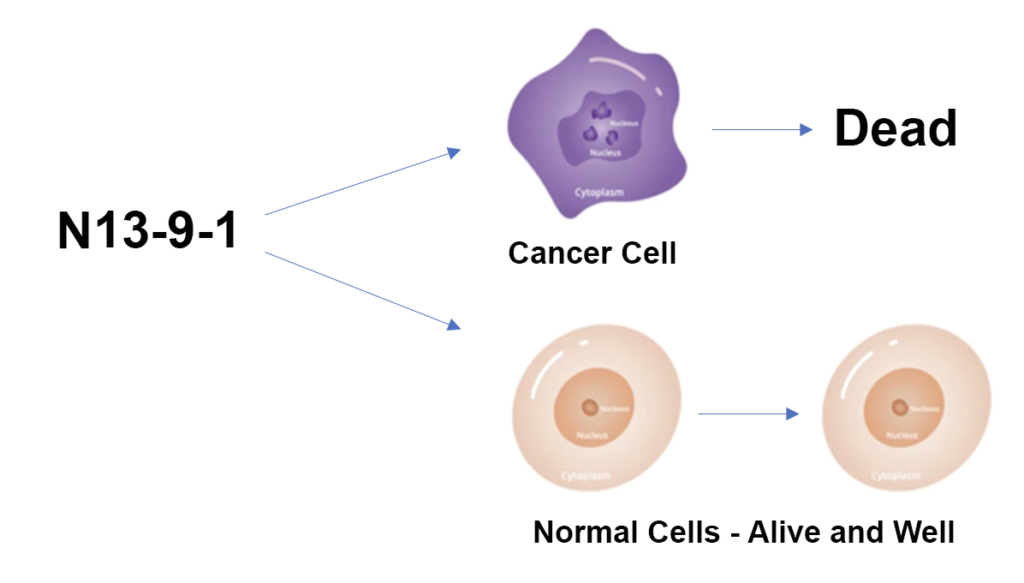
Identifying a safe and effective anti-cancer and
anti-inflammatory small molecule
The work of Dr. Mirko Beljanski (1923-1998) was an inspiration for MPI’s anti-cancer drug project. His research on the anti-cancer activity of the Pao Pereira tree bark extract led to identification of the active molecule in the extract, flavopereirine. The anti-cancer effect of flavopereirine in the Pao extract has been further researched by the Beljanski Foundation** and by several other laboratories*** using a synthetic form that have confirmed its anti-cancer activity and relatively low toxicity.
Naturally occurring molecules
Naturally occurring molecules like flavopereirine cannot be patented, which generally blocks their development as drugs. However, a structurally altered molecule, a variant that is not naturally occurring, can be patentable especially if it confers an improvement in biological activity.
To that end, a small chemical alteration was made to the flavopereirine structure—the ethyl group was removed—yielding the distinct molecule, de-ethylflavopeirine (N13-9-1). Our research led to the patenting of significant medical treatments for the structurally altered molecule, N13-9-1.

Pao pereira tree in the Amazon rainforest

Synthetic N13-9-1 is less toxic than natural flavopereirine
Subsequent studies by MPI revealed two facts: the de-ethylflavopereirine molecule appears to retain the same anti-cancer activity as flavopereirine, implying that the ethyl group does not confer anti-cancer effect. However, we have found that de-ethylflavopereirine is less toxic in animals than flavopereirine, implying that the ethyl group is associated with this difference in toxicity. The novelty of the reduction in toxicity was important for allowance of MPI’s patent.
The N13-9-1 patent is titled:
‘Selective Anti-Cancer Agent Effective for Prevention and Treatment’ (US Patent No. 11083714B2).
The EU patent (EP3773582B1) granted October 25, 2023.
The Japanese patent (7491514) granted May 20, 2024.
Applications are pending in Canada and China.

artistic rendering of cells
** doi:10.1177/1534735413510557
doi:10.3109/13880209.2013.808232
***doi:10.1177/1534735413510557
doi:10.3109/13880209.2013.808232
